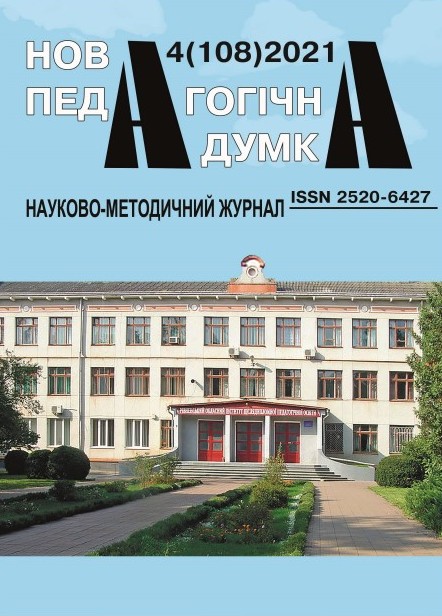Development of students’ critical thinking during studying the topic «Holodomor of 1932–1933 in Ukraine»
Abstract
The article outlines the ways of development of critical thinking of student’s in the study of the topic «Holodomor of 1932-1933 in Ukraine». Attention is paid to the fact that the school course of history Holodomor issues is important for the formation of key competencies and subject the students, their active citizenship, respect for human rights and freedoms and the development of critical thinking skills. Given the changing approaches to teaching the topic outlines key issues, which should focus for the proper understanding of contemporary processes taking place in Ukraine and the world.
Emphasized that Holodomor must be studied not only as a great tragedy, but also a history of the Ukrainian struggle and mutual support. It is important to raise the topic of information and propaganda during the Holodomor of 1932–1933, manifestations of charity, steadfastness in extreme, life-threatening conditions, and so on. It is necessary to name as many names and surnames of people who managed to survive the times that helped others do it, who told the world the truth about the situation in Ukraine in 1932–1933 and the tragedy of the Holodomor and so on.
In order to understand the policy of organizing the famine of the 1930s and its consequences, it is necessary to apply a set of appropriate methodological tools for the development of critical thinking, designed to create conditions for students to understand the material studied, systematize, generalize knowledge, ability to find necessary information and defend their own point of view, justifying it, make informed decisions.
As part of our article offers some examples of methods and techniques of critical thinking in the study of Holodomor 1932-1933. Among them: the methods of work with different kinds of texts (memoirs, diaries of eyewitnesses / participants of events that took place in the 30s of the twentieth century, documents, publications in the press of that time),visual methods of information organization; asking questions; educational discussion and reflection. The creative use of the tools will allow teachers to achieve good results in the development of critical thinking of students and improve their learning achievements.





